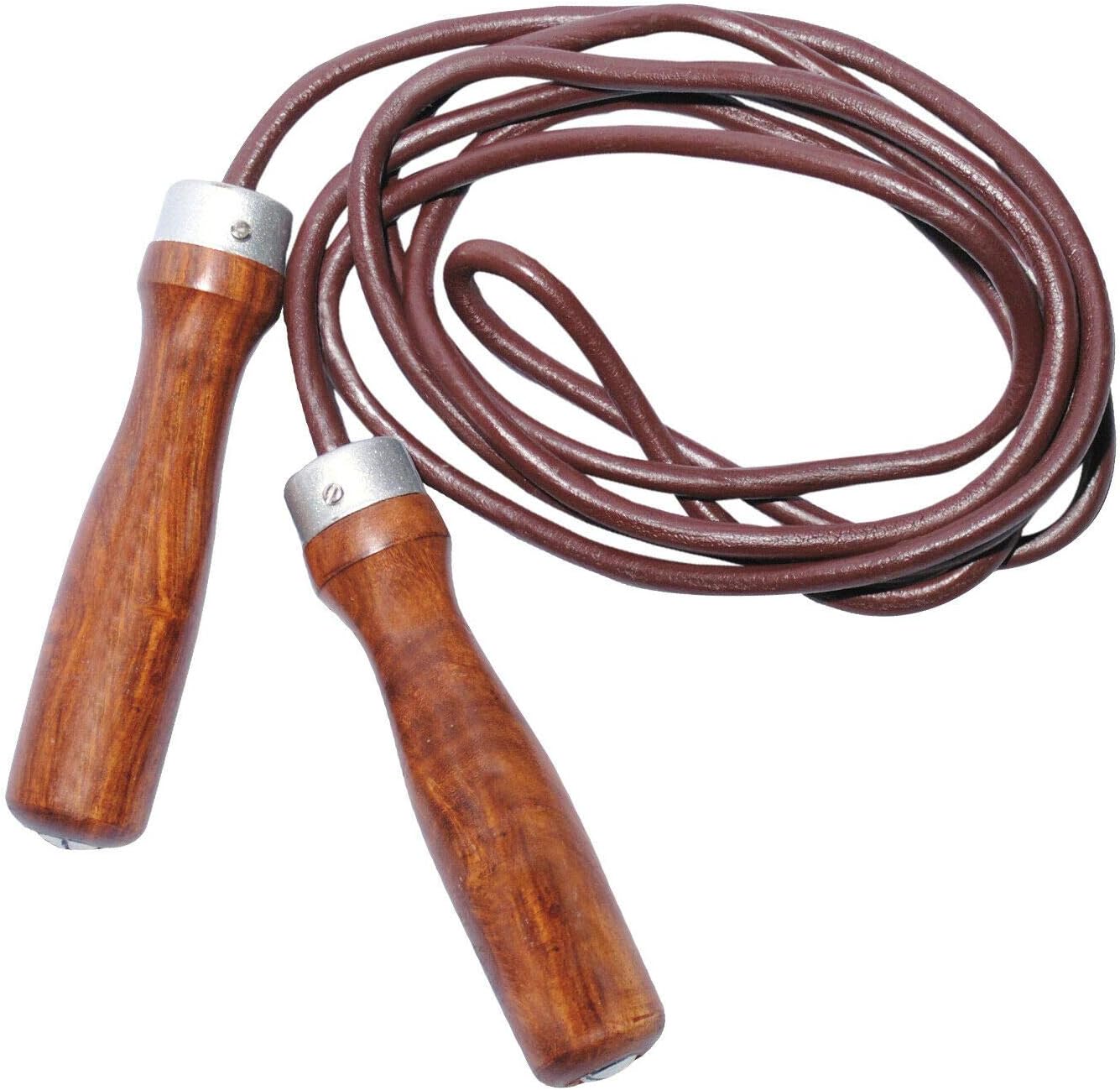Why Triathletes should pick up a Skipping Rope to help with running
 Karen Parnell
May 17, 2022
Karen Parnell
May 17, 2022

Get your FREE 23-Page Athletes Guide to Strength and Conditioning
Why Triathletes should pick up a Skipping Rope to help with running
If you can’t get outside for your regular runs then using a skipping rope or jump rope is a great alternative and does not need much space to do.
I was talking to a friend last week and she said she was struggling to get her run training done due to the heat of Dubai and the treadmill running she was able to do was not reaping the gains that she expected. We discussed a few options and one of them was adding in skipping or jump rope training. She said she loved skipping rope so chose this option as a way forward.
Jumping rope will primarily work your calves, glutes and quads, but as an added benefit your shoulders, chest, back and triceps will assist in constantly turning the rope so these muscles will also be active and engaged. According to the International Sports Conditioning Association, or ISCA, jumping rope will improve your speed, agility, power, endurance, balance and coordination, all of which are relevant while running.
Skipping is a plyometric activity. Plyometrics, or jump training, is a type of exercise training that uses the speed and force of different movements to build muscle power. Plyometric training helps you run faster and develop more power because you are training your anaerobic system, increasing your cardiovascular fitness, and building strength more efficiently than you would with bodyweight exercises.
The fast footwork in jumping rope can improve your running performance and if you are a distance runner you can benefit from the posture work that jumping rope creates. As a runner you should never run while hunched over or with rounded shoulders as this is inefficient. Jumping rope requires a long, straight spine, which can translate to your running motion and improved running technique.
While jumping rope is a weight-bearing activity, it provides far less impact than jogging or sprinting, allowing your muscles and joints to bear less intensity on the days that you don't run on the treadmill, road and trails. If skipping is still too much impact for you are your stage of training you could try water running.
A study by Brigham Young University found that jumping 10 to 20 times a day with 30 seconds of breaks in between jumps significantly improved hip bone mass density (BMD) in women age 25 to 50 after 16 weeks.
Jumping rope can help with:
· Your general posture by opening up your chest automatically
· Work the muscles used during running like calves, glutes and quads
· Improves your speed, agility, power, endurance, balance and coordination
· Jumping on two feet reduces the impact by half that of running
· Studies have show that Jumping improves bone density
· Jumping aids in the development of the left and right hemispheres of your brain, which further enhances spacial awareness, improves reading skills, increases memory and makes you more mentally alert
Jumping rope is also not very expensive and you can use washing line or standard rope and even if you buy one it wont break the bank with a decent rope being under 20€.
Low Cost Leather Jump Rope on Amazon.
Get your FREE 23-Page Athletes Guide to Strength and Conditioning
Types of Skipping or Jump Rope
Smart Rope with Bluetooth
As I was talking to my friend I remembered that I bought two Tangram Bluetooth Smart skipping ropes on a Kickstarter campaign and never used them. It was quite a while ago so I thought they may not charge up (they have a rechargeable battery) and also there may not be a valid App any more. To my surprise not only did they charge but there was also a supported App!
The photo below shows the Smart Rope and new App on my iPad. They support Android and Apple devices. The App has interval workouts for various levels from beginner to expert level 9. It records jumps, time, calories and shows your jumping history. You can connect with friends and complete challenges and competitions. This can give more structure to your workouts and add motivation. It does not connect to Apps like Strava, Garmin Connect etc but when I contacted their support team they said they would let their development team know this would be good for athletes and coaches.

Smart Rope and App for tracking your rope training
Get your FREE 23-Page Athletes Guide to Strength and Conditioning
Another new smart rope has been launched by RENPHO. RENPHO's technology has been scientifically proven to accurately measure fitness performance across multiple parameters including calories burned, jump count, pace kept, total exercise time, average time per exercise, number of sets completed, and more. It comes with a comprehensive training App to help you get started and track your progress and also offers follow along training sessions.
Here’s an example workout you can try. Don’t worry if you don’t complete the full workout (5 rounds) first time as jumping rope is tough! Just do as many rounds as you can and work up to 5.
Jump / Skipping Rope Example Workout
Here's a 27 minute workout to try - it's quite a long workout so make sure you take the rest periods and cut it short if it becomes too hard or if you feel your ankles, calf's or knees are fatiguing too much. You can also cut the repeats down from 5 to 1 on your first attempt and build up from there.
Time: 27.5 minutes
EQUIPMENT
Skipping rope / jump rope
WARM UP
5 min dynamic stretches.
MAIN SESSION
· Standard jumps - 20 seconds
· Rest - 10 seconds
· Right foot hops - 20 seconds
· Rest - 10 seconds
· Left foot hops - 20 seconds
· Rest - 10 seconds
· High knee jumps - 20 seconds
· Rest - 10 seconds
· Standard jumps - 20 seconds
· Rest - 10 seconds
· Rest one minute.
Repeat the circuit five times
WARM DOWN
5 min static stretches.
Jumping Rope Training Hack
Take a jump / skipping rope with you to work, on holiday or business and even if you can’t get outside you can always do your scheduled “run” workout.
During lockdown I added skipping as an alternative to running in some of my training plans. Here's an example training plan on Final Surge if you wanted skipping as an option alongside running.
Get your FREE 23-Page Athletes Guide to Strength and Conditioning
Conclusion: Jumping Rope for Athletes
In conclusion, incorporating jump rope exercises into your triathlon training regime can be a game-changer for both novice and seasoned athletes. The simplicity of this activity belies its incredible effectiveness in enhancing cardiovascular fitness, agility, and overall athletic performance. As a triathlete, the diverse benefits of jump rope, from improving endurance and coordination to providing an alternative for recovery days, make it a versatile and accessible addition to your routine.
By embracing the rhythmic cadence of skipping, you not only strengthen key muscle groups crucial for swimming, cycling, and running, but you also fine-tune your timing and precision—skills that are paramount in the demanding world of triathlon. The efficiency of a jump rope workout, allowing you to achieve significant results in a short amount of time, aligns seamlessly with the multifaceted demands of triathlon training. It's also a way to integrate lower impact plyometrics into your training routine.
Furthermore, the portability and affordability of a jump rope make it a convenient companion for triathletes, enabling them to stay on track with their fitness goals wherever their training may take them. Whether you're looking to boost your endurance, refine your footwork, or simply inject a new element of fun into your routine, the jump rope is a versatile tool that can cater to athletes of all levels.
So, next time you lace up your running shoes or mount your bike, consider the simple yet powerful act of skipping with a rope. It might just be the secret ingredient that propels your triathlon training to new heights, ensuring you not only cross the finish line but do so with enhanced strength, agility, and a renewed sense of athletic prowess. Happy skipping and may your triathlon journey be filled with leaps and bounds towards success!
Karen Parnell is a Level 3 British Triathlon and IRONMAN Certified Coach, 8020 Endurance Certified Coach, WOWSA Level 3 open water swimming coach and NASM Personal Trainer and Sports Technology Writer.
Karen has a post graduate MSc in Sports Performance Coaching from the University of Stirling.
Need a training plan? I have plans on TrainingPeaks and FinalSurge:
I also coach a very small number of athletes one to one for all triathlon and multi-sport distances, open water swimming events and running races, email me for details and availability. Karen.parnell@chilitri.com
Get your FREE Guide to Running Speed and Technique
Get your FREE Swim Workouts for Triathletes E-book
Get your FREE Open Water Swimming Sessions E-Book
Get your FREE 23-Page Athletes Guide to Strength and Conditioning
FAQ: Why using a jump rope is beneficial for runners and triathletes
How can using a jump rope benefit runners and triathletes?
Jump rope training offers several benefits for runners and triathletes, including:
- Cardiovascular fitness: Jumping rope is an excellent cardiovascular exercise that elevates heart rate and improves cardiovascular endurance, which is crucial for endurance sports like running and triathlon.
- Weight management: Jumping rope is a calorie-burning activity that can aid in weight management and body composition goals. It helps burn a significant number of calories in a short amount of time, supporting weight loss or maintenance.
- Coordination and agility: Jumping rope requires coordination and timing, enhancing motor skills and footwork. This can translate into improved running form, agility, and overall athletic performance.
- Leg strength and power: Jumping rope engages the lower body muscles, including calves, quadriceps, hamstrings, and glutes. Regular jump rope training can strengthen these muscles, improving running stride power and efficiency.
- Bone density and strength: The impact of jumping rope helps stimulate bone growth and can improve bone density, which is especially beneficial for endurance athletes prone to stress fractures or osteoporosis risk.
- Injury prevention: Jump rope training strengthens the muscles and tendons around the ankles and feet, reducing the risk of common running-related injuries, such as shin splints or plantar fasciitis.
- Time efficiency: Jumping rope is a time-efficient workout option. It can be done virtually anywhere, requiring minimal space and equipment, making it convenient for triathletes and runners with busy schedules.
How often should I incorporate jump rope training into my routine?
The frequency of jump rope training depends on your current fitness level, training load, and overall goals. Beginners may start with 2-3 sessions per week and gradually increase as fitness improves. Experienced athletes can incorporate jump rope as a warm-up, cooldown, or as part of interval training. Listen to your body and adjust the frequency based on recovery and overall training volume.
How long should a jump rope session be?
The duration of a jump rope session can vary depending on your fitness level and training goals. Beginners may start with 5-10 minutes per session and gradually increase the duration as endurance improves. More advanced athletes can aim for 15-30 minutes or incorporate jump rope intervals into their workouts.
What type of jump rope should I use?
There are various types of jump ropes available, including basic plastic ropes, speed ropes, weighted ropes or even smart ropes. The choice depends on personal preference and training goals. Speed ropes are lightweight and ideal for improving speed and coordination, while weighted ropes provide additional resistance and can help strengthen muscles. Experiment with different types to find the one that suits you best.
Are there any precautions or considerations when using a jump rope?
Yes, here are a few considerations:
- Start gradually: If you're new to jumping rope or have any underlying health conditions, start with shorter sessions and gradually increase intensity and duration.
- Proper technique: Learn and practice proper jump rope technique to minimize the risk of injury and maximize benefits. Maintain an upright posture, engage your core, and land softly on the balls of your feet.
- Surface and footwear: Jump rope on a flat, non-slip surface to minimize the risk of slipping or tripping. Wear supportive athletic shoes with adequate cushioning to absorb impact.
- Listen to your body: If you experience any pain, discomfort, or excessive fatigue, stop and rest. Consult with a healthcare professional if you have any concerns.
Incorporating jump rope into your training routine should complement your overall training plan. It can be used as a dynamic warm-up, a high-intensity interval training tool, or a standalone cardio workout. Modify the intensity, duration, and frequency based on your individual needs and consult with a coach or trainer for personalized guidance.
#triathlon #running #chilitri #skippingrope #jumprope #triathlontraining #triathloncoach #traithlontrainingplans #runningtrainingplans #swimmingtrainingplans

